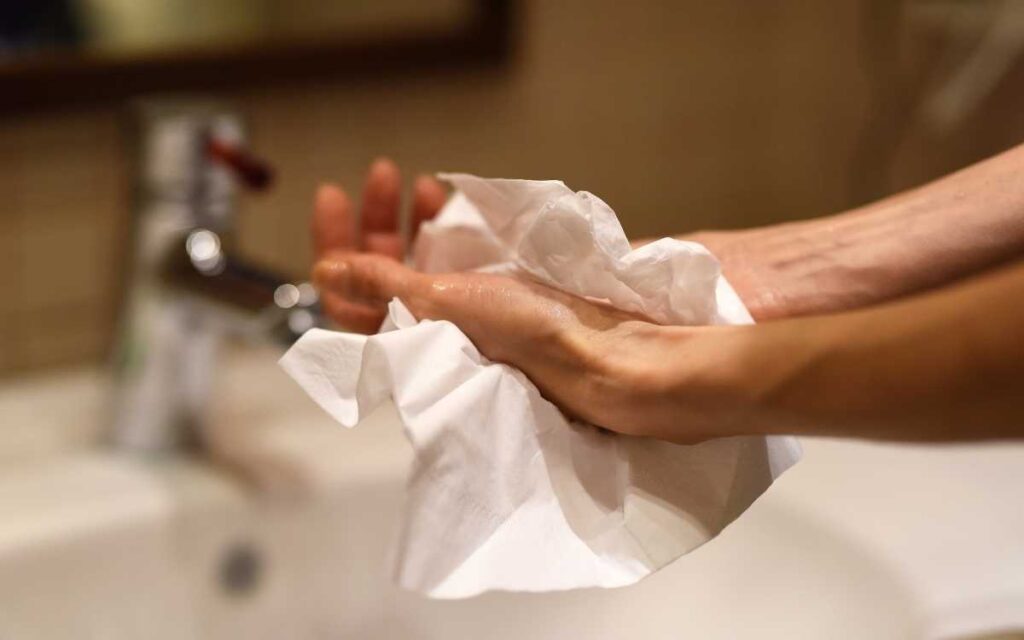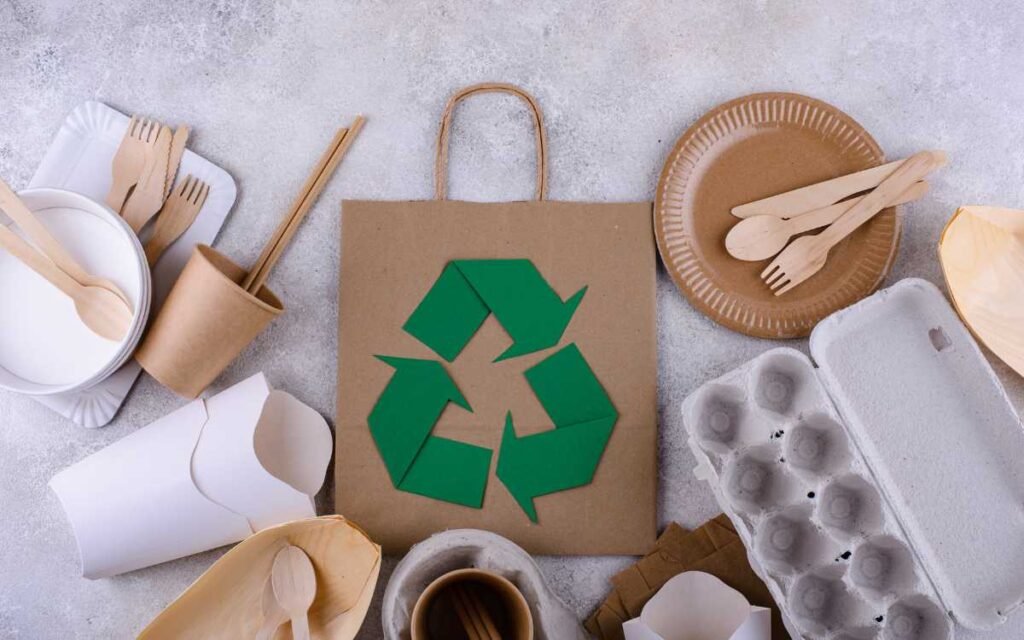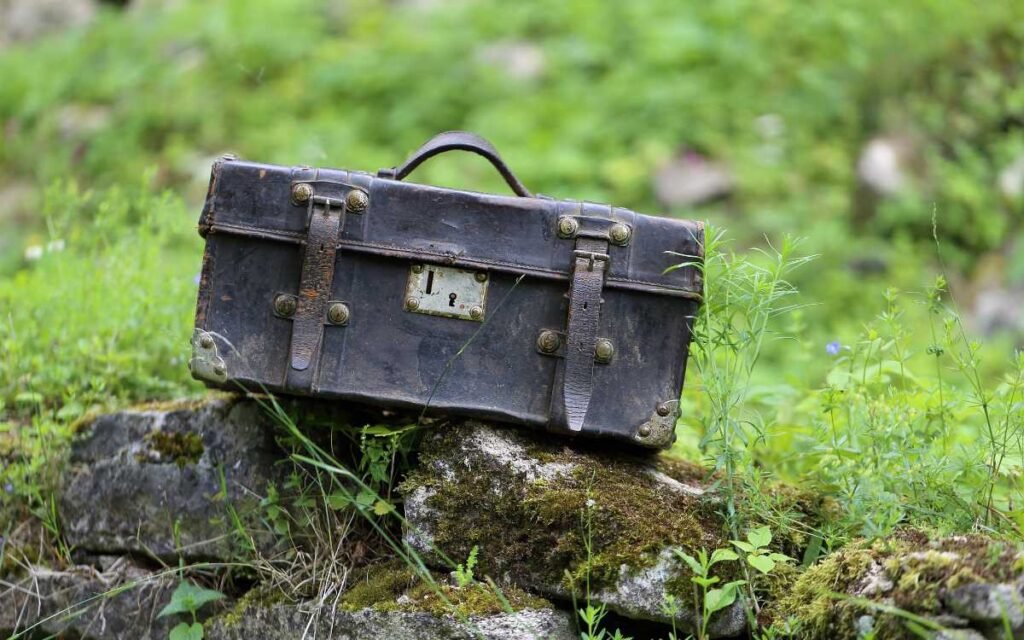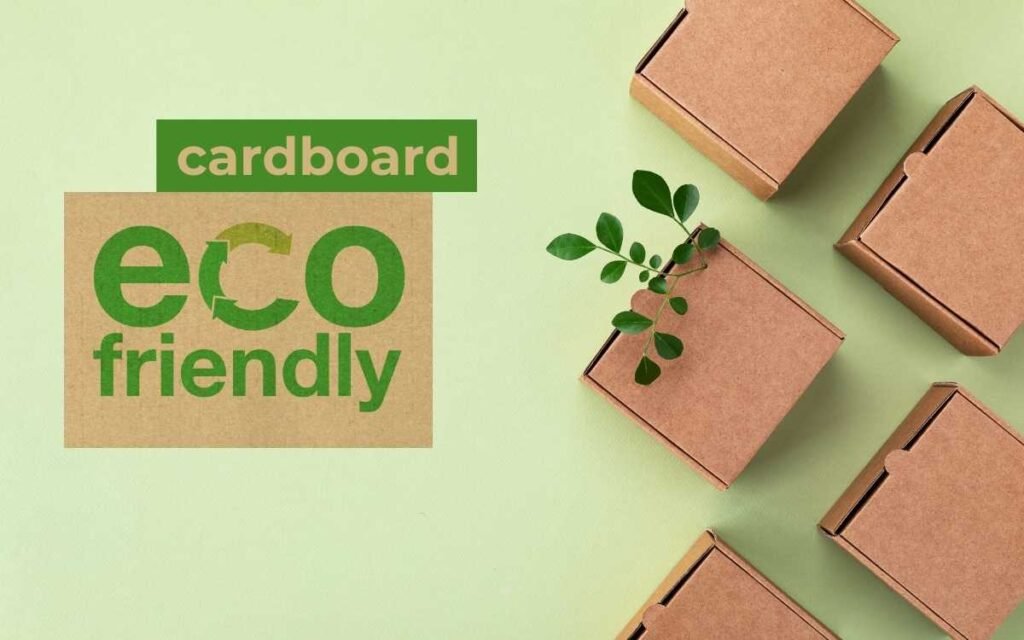
- Introduction
- Are Paper Towels Compostable?
- Are All Paper Towels Brands Compostable?
- 7 Key Factors That Makes Paper Towels Compostable?
- How compostable paper towels breakdown naturally?
- Easy 5 Step Backyard Composting Guide for Beginner’s at Home
- What Environmental Benefits Do Composting Paper Towels Offer?
- Discovering Paper Towels: Simple Stat You Should Know
- How to Buy Best Compostable Paper Towels?
- Bottom Line
- References
- FAQs
Introduction
In our eco-friendly world, we often think about how our everyday items impact the environment. Take, for instance, the simple paper towel.
But have you ever paused to ask: are paper towels truly compostable?
Before we get into it, let’s understand what compostable means, how it naturally breaks down, the backyard composting process, tips for buying the best compostable paper towels, and more.
Composting paper towels is crucial for our journey towards sustainability. Why is it so important?
Well, stay with me as I explain.
Let’s uncover the truth about whether paper towels can be composted. Our aim is to keep you informed, helping you make thoughtful choices.
Are Paper Towels Compostable?

The straightforward answer is yes. However, the story doesn’t end there. It is made from organic materials, mainly wood pulp. However, they don’t always decompose at the same rate. The conditions matter a lot.
The type of paper towel: It is made from recycled paper or plant fibers may biodegrade more quickly than paper towels made from virgin wood pulp.
The thickness of the paper towel: Thicker paper towels take longer to biodegrade than thinner paper towels.
The presence of additives: Paper towels that contain additives, such as bleach or perfumes, may take longer to biodegrade.
The environmental conditions: It will biodegrade more quickly in warm, moist environments than in cold, dry environments.
Paper towels typically decompose in 20-90 Days at home.
In the right environment with enough moisture and helpful microorganisms, they break down fast. But in places like landfills, where there’s limited oxygen, they decompose much slower.
So, even though they’re compostable, where you discard them affects their decomposition speed.
Are All Paper Towels Brands Compostable?

Yes, you got it right! Most brands, including popular ones like simply truth, viva, bounty, kirkland, brawny and costco are designed to break down naturally, making them compostable.
The important thing to keep in mind is what we add to these paper towels later on. It’s not about the towels themselves; it’s about the stuff we put on them. Being mindful of what we throw on these towels is key to ensuring they can go back to nature in a friendly way.
7 Key Factors That Makes Paper Towels Compostable?

Compostable paper towels are designed to break down into organic matter in a composting environment.
Here I have explained 7 key factors contribute to the compostability of paper towels:
1. Raw Materials
These are typically made from natural and organic materials, such as wood fiber, pine (soft wood), cotton, bamboo, eucalyptus (hard wood) paper pulp.
These are main key factor for making toilet paper compostable.
2. Absence of Harmful Chemicals
Paper towels labeled as compostable should be free from toxic substances like chlorine and formaldehyde.
By avoiding chlorine for bleaching process can reduce risks of toxins such as dioxin and furans. They are dangerous to human body.
According to IARC, “a group from the World Health Organization called the International Agency for Research on Cancer studied dioxins and furans. They found that a powerful dioxin called 2,3,7,8-TCDD is now known as a Group 1 carcinogen. This means it’s confirmed to cause cancer in humans.“
3. Certifications
Green paper such as paper towel can be certified by organizations like Green Seal, EcoLogo, Chlorine Free Products Association (CFPA), Green-e, Forest Stewardship Council (FSC), and Green Restaurant Association (GRA).
These certifications check things like recycled content and eco-friendly manufacturing to make sure the paper products are compostable and environmentally friendly.
4. Thickness and Structure
They are often designed to have an appropriate thickness and structure that allows for a balance between strength and ease of decomposition.
While they need to perform their intended function, they should not be overly dense or layered, as this could hinder composting.
5. Inks and Dyes
If the paper towels have any printing or coloring, the inks and dyes used should also be compostable and non-toxic. Vegetable-based inks are a common environmentally friendly choice.
6. Moisture Content
They may have a controlled moisture content to facilitate the composting process. Excessively wet or dry materials can affect decomposition rates.
7. Carbon-to-Nitrogen Ratio
The carbon-to-nitrogen (C/N) ratio of compostable materials is crucial for effective composting.
Paper towels, being high in carbon, should be balanced with nitrogen-rich materials in the compost pile for optimal microbial activity.
How compostable paper towels breakdown naturally?

Compostable paper towels naturally break down when you put them in compost.
In this environment with food scraps and other organic waste, tiny organisms like bacteria and fungi break down the paper towels.
This process turns them into nutrient-rich compost that’s great for plants and gardening.
It’s a simple and eco-friendly way to get rid of paper towels while creating useful compost for your garden.
Easy 5 Step Backyard Composting Guide for Beginner’s at Home

Composting paper towels at backyard is easy and simple process.
Here is simple five step guide for beginner’s to composting paper towels at home.
Step 1: Separate and Store
Keep the disposable cloths approved for composting in a separate bin along with other brown waste, such as cardboard or clean recyclable paper plates.
Step2: Tear into Pieces
Tear the disposable cloths into small pieces to help them break down faster in the composting process.
Step 3: Balanced Addition
Add the torn disposable cloths to the compost in moderate amounts to maintain a good balance between paper and vegetable scraps.
Step 4: Mix Well
Stir the disposable cloths thoroughly into the compost by turning the bin or using a garden fork. This ensures even decomposition.
Step5: Regular Turning
Turn the compost every 2-3 days to keep it well-aerated and warm. This helps the microbes break down the disposable cloths and other materials, transforming them into nutrient-rich garden mulch.
Extra Tip: Consider placing the compost bin in a sunny spot to enhance microbial activity. Additionally, avoid adding meat, dairy, or oily items to your compost to prevent unpleasant odors and pests.
By following these steps, you contribute to reducing waste and create valuable compost to enrich your garden soil.
What Environmental Benefits Do Composting Paper Towels Offer?

Composting paper towels helps the environment in simple ways:
- Less Garbage: Composting keeps paper towels out of regular trash, reducing overall waste.
- Less Bad Gas: Instead of going to landfills, composting prevents the release of a harmful gas called methane.
- Better Soil: Composting turns paper towels into nutrient-rich soil, making the ground healthier.
- Saving Water: Compost helps soil hold onto water, so we don’t need as much for plants.
- Cleaner Water: Composted materials, like paper towels, can filter water, making it cleaner.
- Local Help: Composting in your area means less travel for waste, which is good for the environment.
- Trapping Carbon: Composting keeps carbon in the soil, lowering the gases that harm our planet.
Discovering Paper Towels: Simple Stat You Should Know

Paper towels have a small carbon footprint individually (about 0.06 lbs of CO2), but when everyone uses them, it adds up.
In the U.S., people use around 13 billion pounds of disposable cloths every year, causing a big impact on carbon emissions.
Making disposable cloths leads to deforestation, where trees are cut down, causing loss of habitats for wildlife and more greenhouse gas emissions. This not only affects disposable cloths but also the whole paper industry.
When we throw away disposable cloths in landfills, they break down and release methane, a gas that contributes to climate change.
In 2018, paper products made up almost 12% of all the trash in the U.S., causing global environmental problems.
To make disposable cloths, we use a lot of resources like water and wood pulp. This puts stress on the environment and uses up important resources.
The whole life cycle of disposable cloths, from getting the materials to throwing them away, creates a large amount of carbon dioxide emissions, further impacting the environment.

From 2011 to 2020, the usage of disposable cloths in the United States has been tracked, with a forecast until 2024.
The data, calculated by Statista using U.S. Census data and the Simmons National Consumer Survey (NHCS), reveals that in 2020, 321.87 million Americans used disposable cloths.
Projections indicate an increase to 331.16 million users by 2024.
So, it’s advisable to opt eco-friendly disposable cloths over regular ones. These options are better for the environment. Look for towels made from recycled materials or labeled as sustainable. They have a smaller impact on the planet, support recycling, and help prevent deforestation. Making this choice contributes to a greener and more sustainable world, promoting a healthier environment.
How to Buy Best Compostable Paper Towels?

If you’re looking for compostable paper towels in simpler terms, follow these tips:
Check Certifications
Make sure the disposable cloths have labels like “ASTM D6400” or “EN 13432” showing they meet compostability standards, ensuring they break down properly.
Look at Materials
Choose towels made from bamboo, sugarcane, or recycled paper. These materials are better for the environment.
Avoid Chlorine
Pick towels that are chlorine-free or oxygen-bleached to reduce the use of harmful chemicals.
Mind the Packaging
Consider how the towels are packaged. Minimal or eco-friendly packaging is better for the environment.
Trustworthy Brands
Go for well-known brands committed to sustainability. Check what other customers say in reviews to make sure the product meets your expectations.
Buy in Bulk
Getting a larger quantity reduces packaging waste and often has a lower environmental impact.
Bottom Line
In summary, it’s better to choose eco-friendly paper towels, like those made from recycled materials. When buying compostable paper towels, check for certifications, pick bamboo or sugarcane materials, skip chlorine, choose eco-friendly packaging, prefer reliable sustainable brands, and buy in bulk to help the environment. These choices support a greener world.
So, what are your thoughts on the compostability of paper towels and its impact on the environment?
References
Paper Towel Composting – Office of Sustainability (charlotte.edu)
Are Paper Towels Sustainable? Here Are the Facts | Impactful Ninja
U.S.: usage of paper towels 2011-2024 | Statista






